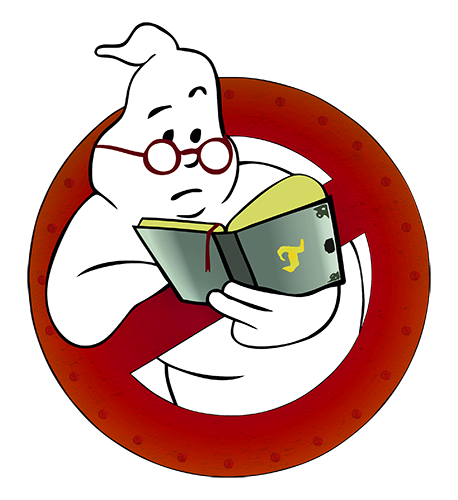Devilmanozzy (talk | contribs) (Fixing Categories.) Tag: sourceedit |
(Adding categories) Tag: categoryselect |
||
| Line 30: | Line 30: | ||
[[Category:Corporeal]] |
[[Category:Corporeal]] |
||
[[Category:GB:RPG Characters]] |
[[Category:GB:RPG Characters]] |
||
| + | [[Category:Legends]] |
||
Latest revision as of 05:50, 16 July 2016
The Sphinx is an Egyptian spirit from the Ghostbusters RPG's Tobin's Spirit Guide (RPG).
Tobin's Summary
This is one of the most unusual, familiar, and fearsome creatures of all of those that divide their existence between the physical world and the realm of the ether. We have the ancient Egyptians to thank for statues of what the earliest sphinxes looked like, and the somewhat less ancient Greeks to credit for the first meaningful glimpse into the sphinx's distinctive personality.
Most Egyptian sphinxes had a simple, if bizarre, anatomy: the body of a lion and the head of either a human being or of one of the sacred animals (usually a ram, ibis, or bull). When the sphinx had a human head, it was usually meant as a representation of a pharaoh. We know what these sphinxes look like because of the many images the Egyptians left behind in wall paintings and sculptures. In every such case, the position and placement of the images affirms that sphinxes in Egyptian times were guardians- strong, stolid, and silent. The spiritual entities that corresponded to these earthly representations certainly had some kind of consciousness, but no anecdotes have survived as to the wit or sensibilities of the sphinx in these early times. All of that changed with the rise of the Greek empire, in which these manifestations from the ether figured prominently. A guardian the sphinx still was (and would always remain)- but now it was a guardian that kept others on their guard. The sphinx in Greece still had the body of a lion, to which were affixed the head and upper body of a human female plus a pair of wings. As such, it is the embodiment of some of the best attributes of the animal kingdom: the intellect and "heart" of homo sapiens, the physical strength of the lion, and the ability to fly.
I repeat here two tales which lie at the extremes, one showing the sphinx capable of doing a deed that was basically good (except from the tavern keeper's point of view) and the other demonstrating how sinister and unfeeling the spirit can be. Perhaps it has its reasons for everything it does; since it is apparently impossible to converse with the spirit aside from the strict question-and-answer dialogue that it initiates, we may never know any more about the inscrutable sphinx than we do right now.
In the popular Greek legend, a sphinx guards the entrance to the city of Thebes- which, not coincidentally,is also the name of a city in ancient Egypt. She stops travelers to ask them a riddle, and if they do not know the answer, she kills them.
The riddle, which has become known worldwide in one form or another, is this: What has four feet in the morning, two at noon, and three at night?
The answer, as given by the hero Oedipus, is Man: he crawls as a baby, walks erect as an adult, and uses a cane when he reaches old age. Legend has it that when Oedipus supplied the correct answer, the sphinx was so mortified that she killed herself. What actually happened is that she flew off in search of another place to guard. Man's proclivity for security and secrecy being what it is, she has had no trouble finding things to do in all the centuries since Oedipus wrecked her joke.
Sphinxes seem to have changed their appearance many times over the years, and don't use the same tactics all the time. One may appear as a real guard- that is, someone who is performing the seemingly legitimate and important function of preventing unauthorized entry. Or a Sphinx may show up in a place where a person would never expect a guard to be; in front of the door to his bedroom, for instance. Sometimes, instead of appearing, a sphinx remains invisible and does its work by controlling the mind of a living person.
No matter how or where it manifests itself, the sphinx gives away its presence to the perceptive observer (Esteemed Reader, someone who has read this book) by what it says when one approaches it. It asks its victim a question that victim can't possibly answer. It leans toward one and, in a conspiratorial whisper, recites a phrase that obviously requires a response- which is just as obviously unknown to the victim. If the auditor fails to give the correct response (and how could he not fail?), the sphinx refuses to let him pass and uses any means at its disposal to keep him from going where it thinks he doesn't belong. Trying a different door or gate or climbing in through a window won't work, because the sphinx can get well ahead of its target and might be angry at one who has shown himself to be a sneaky person. In all the cases of sphinx visitation we have chronicled, no one has ever been able to get the spirit to go away before it wanted to- unless, by some amazing stroke of luck or tedious process of elimination, he manages to guess what the sphinx wants to hear.
